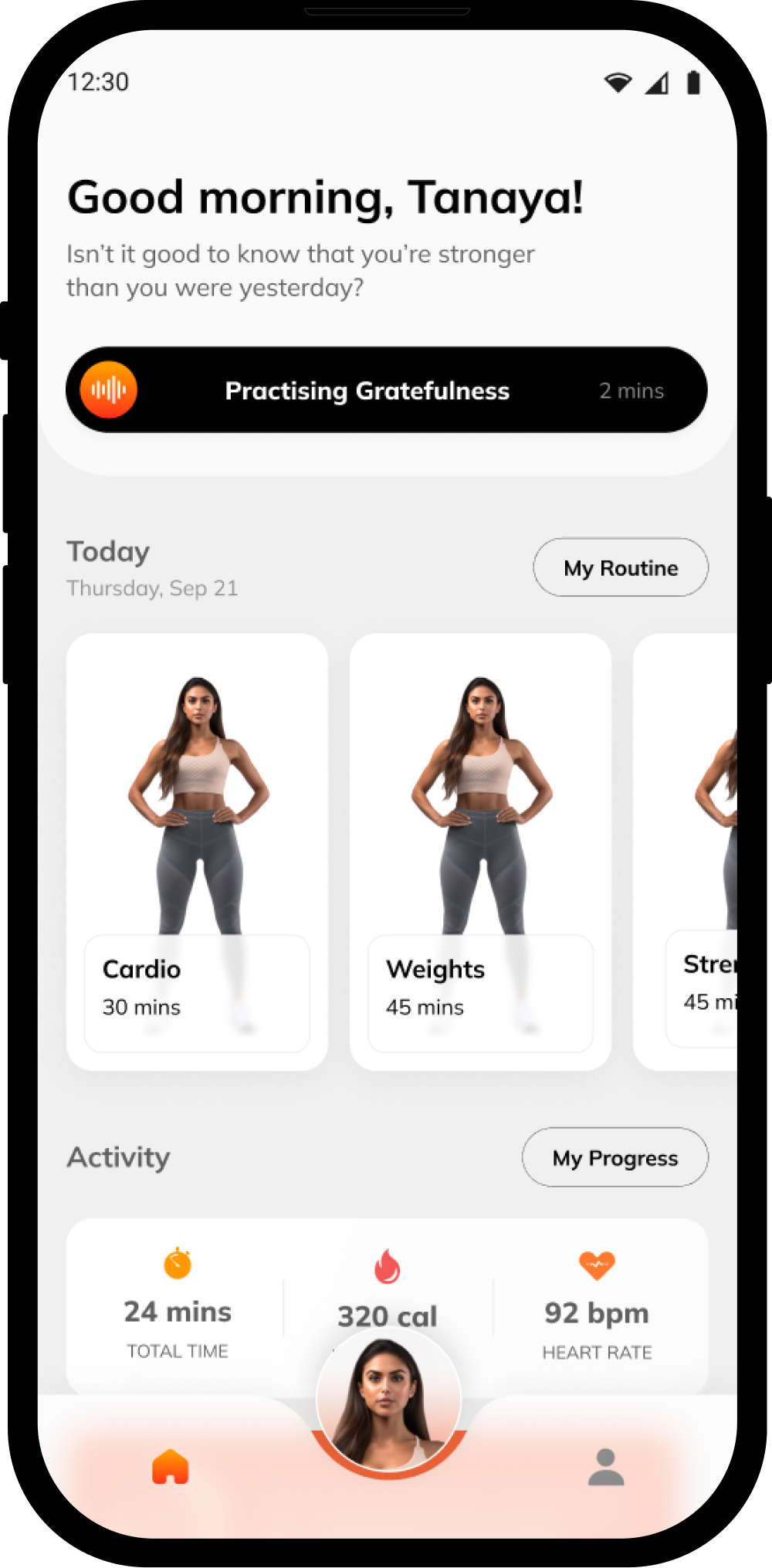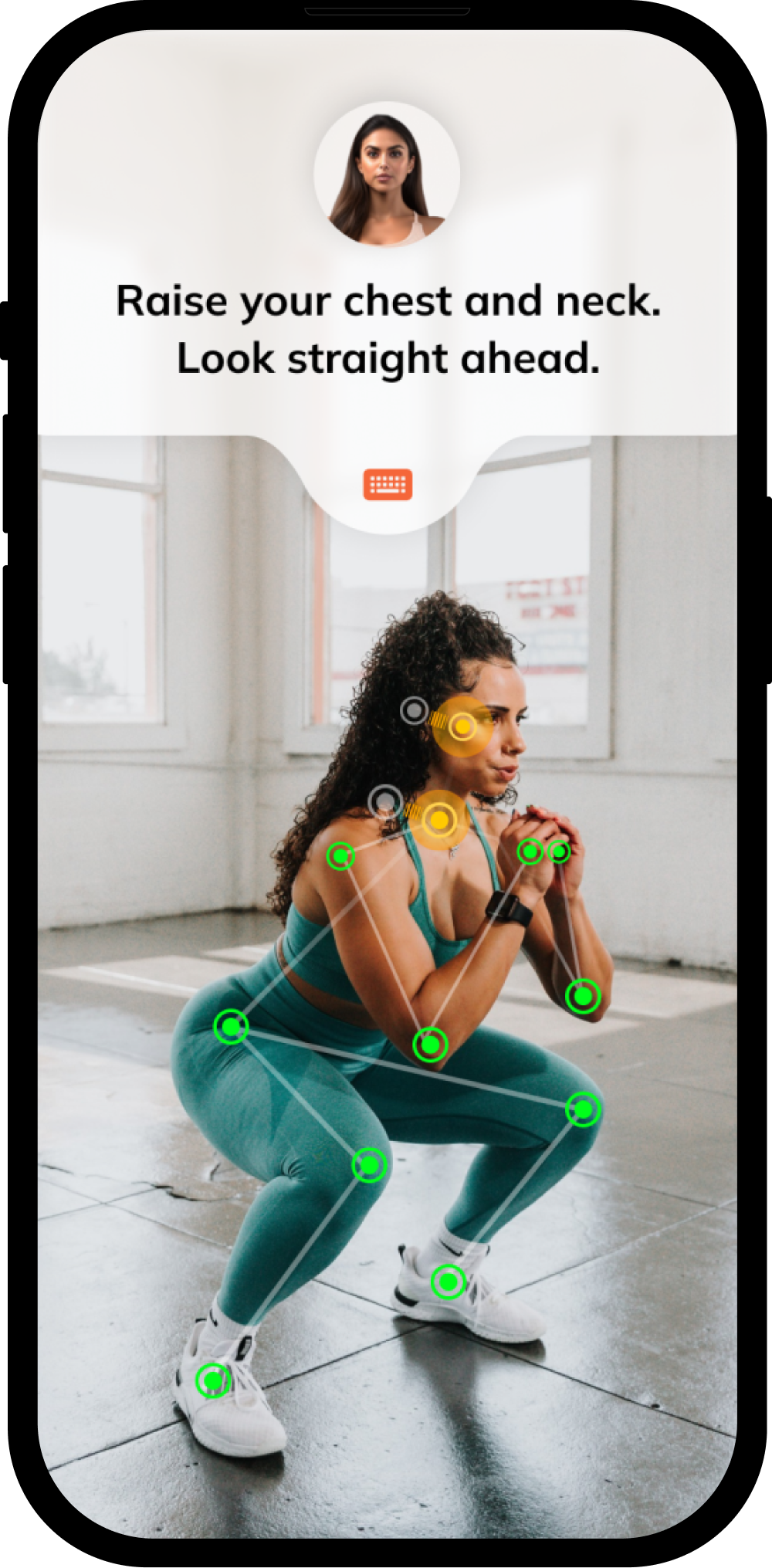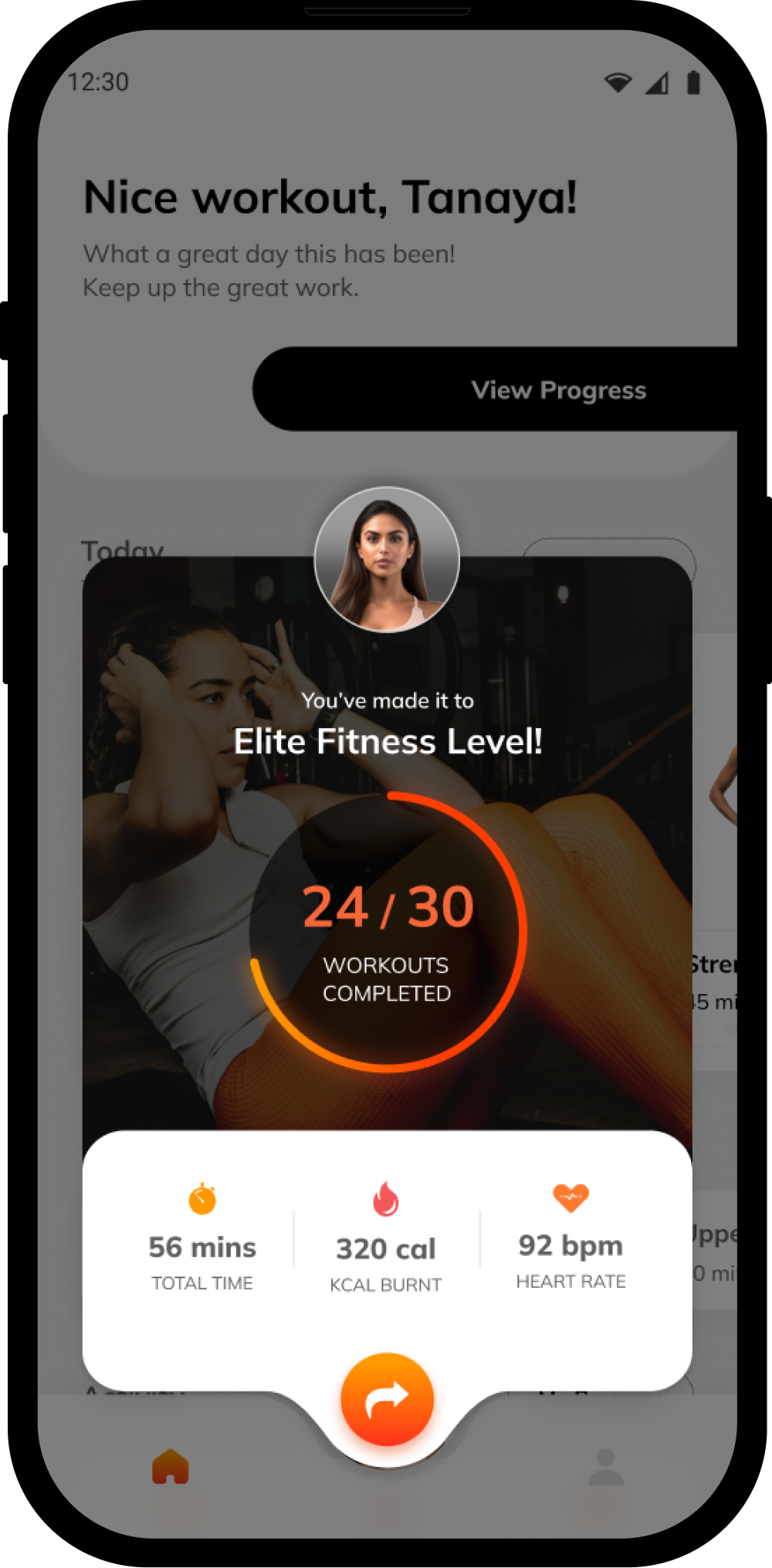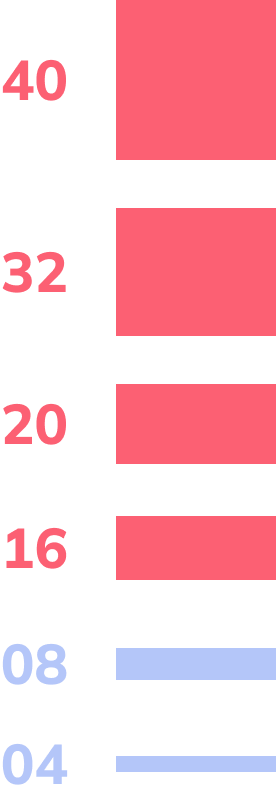ZoFit
AI Personal Trainer

AI personal trainer that generates adaptive workout plans, analyzes progress, and guides safe at-home training.


The Problem
-
Post-pandemic, many people shifted to home workouts and lost accountability, progress, and motivation.
-
Generic workout plans often cause stalled progress or injuries because they don’t adapt to goals, equipment, or time.
-
Live coaching is expensive and not always accessible, creating a gap for an affordable and adaptive fitness experience.
-
Most fitness apps overload users with content or require too much manual setup, making them feel impersonal and mechanical.
The Challenge
Design an AI-powered mobile trainer that feels personal and trustworthy to help people stay consistent with their workouts at home after losing access to gyms during the pandemic.
What
How
Why

The Opportunity & Solution
People were working out at home more than ever. Most struggled to stay consistent or find routines that fit their goals and lifestyle. This was a chance to build a trainer that adapts to each person and feels truly supportive.
We designed ZoFit, an AI personal trainer that understands you like a real coach. It chats to learn your goals, creates custom workout plans, and adjusts them as you progress. You can track your performance, connect smart devices, and get feedback on posture and form.
Projected Impact
Even in beta, it showed clear signals of product-market fit and measurable design impact.
25%
Onboarding
Boost
7d
Retention targets
for beta launch
2x
Increase in
user trust
90%
Prototype
task-success rate

UX Roadmap


01
I wanted to understand how people feel about AI in fitness and what would make them trust a digital trainer. The goal was to design an experience that feels human, keeps people motivated, and adapts to their needs.
High Level Goals
02
I also wanted to explore how we could make home workouts feel more guided and personal, helping users stay consistent and confident without relying on a physical gym or live coach.
Questions from
Discovery Workshops
In the early discovery phase, I facilitated workshops with the team to align
on goals, assumptions, and what success could look like.
How can AI build trust as a personal trainer
for home workouts?
What keeps users motivated and consistent
without a live coach or gym environment?
How personalized should the experience be for different goals and skill levels?
Real User Problem
I explored online communities where people shared their honest experiences with AI-generated workouts.

Competitor Analysis
I analyzed leading fitness and AI coaching apps to uncover gaps in how they deliver personalization and motivation.
Most platforms positioned themselves as trackers or content hubs rather than real coaches.
Despite bold claims of “adaptive workouts” and “AI personalization,” most experiences felt generic and disconnected.
Mapping their value propositions, integrations, and pricing made Zofit’s opportunity clear focus on trust, adaptability, and real-time guidance, not just tracking.

Key Insights from Research
By combining user feedback and competitive analysis, a few clear patterns emerged.
Trust in AI is fragile
Many users doubted if AI could truly understand their bodies or create safe, effective workouts. Some liked the structure, but most still preferred human judgment and experience.
Competitors overpromised personalization
Most fitness apps marketed adaptive workouts, but their experiences still felt generic. Real-time feedback, posture tracking, and emotional connection were missing.
Motivation fades without feedback
People wanted visible progress and corrections, not just static plans. They valued apps that responded, not ones that simply instructed.
Integration and ecosystem add value
Top platforms gained trust by syncing with Apple Health, Fitbit, or other data sources, showing credibility and deeper understanding of users’ health.
Opportunity lies in humanizing AI
Users did not reject AI. They wanted it to feel supportive, personal, and less mechanical. Making AI behave more like a coach, not a calculator, became our design north star.
Target User
Designing for People who train at Home
People who want to stay fit and healthy at home but struggle with motivation, structure, or trusting AI fitness tools.

User Persona
M.Sc. student in UXD at THI
Background
Tanaya started working out regularly before the pandemic but lost consistency once gyms closed. She has tried a few fitness apps, but most feel repetitive or robotic. She wants guidance that feels personal, not generic, and prefers short, flexible workouts he can do at home.
Goals
-
Build a consistent workout routine at home
-
Stay motivated without needing a physical trainer
-
Track visible progress over time
-
Learn proper form and avoid injuries
Frustrations
-
Feels disconnected from AI trainers that sound mechanical
-
Unsure if her workout form is correct
-
Finds most apps overwhelming or too data-heavy
-
Misses human encouragement and accountability
Needs
-
Clear, adaptive guidance that adjusts to her schedule and fitness level
-
Encouraging feedback that feels human, not automated
-
Easy access to posture correction and progress tracking
-
Seamless setup without complex onboarding steps
I want an app that feels like a coach, not a calculator.
Something that understands me and keeps me on track.
Empathy Map
To understand users mindset better, I mapped their thoughts, emotions,
and behaviors around fitness and using AI-powered trainers.
Can an AI really understand
my body?
Wonders if her form is correct
Thinks most fitness apps
are too generic
Thinks
Feels guilty when
she skips workouts
Feels
Motivated to stay healthy but
unsure where to start again
Gets frustrated when
results don’t show quickly
Does
Tracks progress manually on
her phone or smartwatch
Works out inconsistently
at home
Tries different fitness apps
and YouTube routines
I don’t have time for
long workouts.
I like structure,
but I need flexibility.
Says
AI seems cool, but I still
prefer human guidance.

Users needs a solution that makes them feel guided, seen, and supported.
ZoFit’s design focused on building that trust through adaptive, conversational, and encouraging interactions.
User Journey
I mapped users journey to understand how their motivation, emotions,
and actions evolve from discovering ZoFit to building a consistent fitness habit.

In user testing, users starts curious and uncertain, becomes hopeful during onboarding, and grows confident as they builds consistency and sees results.
ZoFit needed to focus on building early trust, reducing uncertainty during workouts, and keeping users motivated through visible, achievable progress.
Pain Points
Across the journey, Users often felt unsure about trusting AI guidance. The onboarding felt too mechanical, and early workouts lacked reassurance about posture and form. Progress tracking felt impersonal, and motivation faded over time without encouragement or feedback.
Opportunities
We saw an opportunity to make AI feel more human and supportive. By adding conversational onboarding, posture feedback, and contextual progress tracking, ZoFit could build trust early and sustain motivation through a more personal and adaptive experience.
Information Architecture
Based on the research and journey mapping, I defined a simple structure that helps
users move easily between planning, training, and tracking.

Kano Model
I mapped features by their functionality and user satisfaction
to identify what truly delights users vs what simply meets expectations.

MoSCoW Prioritisation
I used the MoSCoW method to define MVP priorities and ensure
we delivered the most valuable features first.

Must have
All the requirements that are necessary for the successful completions of the project.
Conversational onboarding
Personalized workouts
AI posture check

Could have
Requirements that are nice to have, but have a much smaller impact when left out of the project.
Social sharing
Meditation mode
Nutrition insights

Should have
Requirements that are important for project completion but not necessary.
Reminders
Daily progress tracking
Basic smart device connection

Will Not have
All the requirements that have been recognised as not a priority for project’s timeframe.
Group challenges
Premium AI voice trainer
Advanced analytics dashboard
The Philosophy
behind the Logo
The logo features two arrows forming the letter Z, symbolizing movement and progress.
The design draws inspiration from the form of water, representing adaptability and transformation. The circular closure creates a subtle Yin and Yang shape, expressing holistic fitness. The balance between physical strength and mental well-being.

Branding choices
& UI Design
I wanted the brand to feel energetic, modern, and supportive that reflects both movement and balance.
I chose a bright orange gradient to represent energy, warmth, and momentum. Colors that inspire action and positivity. Orange also carries an emotional warmth that connects well with fitness motivation.


Design Outcomes
Homepage
The homepage gives users a clear view of their daily workout plan and quick access to short sessions they can do anytime. These include full-body warmups, stretching, yoga, and simple no-equipment routines.
A floating AI button stays visible across the app, allowing users to connect with their trainer instantly for guidance, feedback, or quick adjustments.
The goal was to make every user feel supported and ready to start, no matter how much time or equipment they have.

Posture Check
Before each workout, users are guided to position their phone so the AI can observe their movements clearly. The feature uses real-time posture tracking to check form, balance, and flexibility.
ZoFit gives instant, on-screen corrections to help users adjust their poses and avoid injury, just like a personal trainer would.
This makes every session safer and helps users build better habits with accurate form.

Progress Card
After each workout, users see a progress card that captures their daily performance. It highlights total workouts completed, time spent, calories burned, and heart rate details.
The card reinforces accountability and celebrates consistency. With one tap, users can share their progress on social platforms or with friends, turning small wins into daily motivation.





Design Outcomes
& Learnings
-
I learned that AI can truly support people only when it feels trustworthy and consistent.
-
Structured research and clear prioritization made the biggest difference. Frameworks like Kano and MoSCoW gave direction and helped the team focus on what mattered most.
-
I realized that personalization works best when it feels human. The conversational onboarding turned a technical setup into a moment of connection.
-
I saw how small wins drive long-term engagement. Features like streaks and progress cards helped users stay motivated and feel progress daily.

